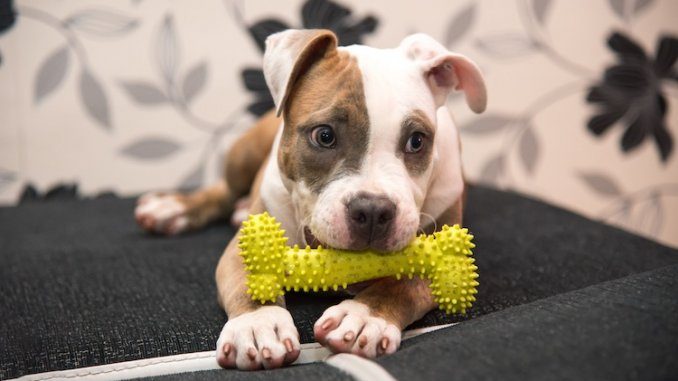
From the moment I encountered the term “Pocket Pitbull,” I was intrigued. What could possibly be more endearing than a compact version of the famously robust Pitbull? Though I’ve never had the pleasure of owning one, my extensive background in animal behavior has fueled my interest in understanding and sharing about unique breeds like this one.
The Pocket Pitbull is not simply a smaller version of its namesake but a distinct crossbreed between an American Pit Bull Terrier and a Patterdale Terrier. This mix results in a dog that packs the resilience and heart of a Pitbull into a smaller, more manageable frame—ideal for those with less space but plenty of love to give.
Join me as we uncover the essentials of the Pocket Pitbull. Whether you’re a potential owner or just a dog enthusiast, you’ll find compelling reasons to admire this stout-hearted companion. Let’s explore what makes the Pocket Pitbull a remarkable blend of courage and companionship.
TABLE OF CONTENTS
- Pocket Pitbull Quick Breed Summary
- Origins of the Pocket Pitbull
- Physical Appearance of the Pocket Pitbull
- Temperament of the Pocket Pitbull
- Taking Care of a Miniature Pitbull
- How to Train a Pitterdale
- Common Health Problems in Pocket Pitbulls
- Costs of Owning a Pocket Pitbull
- FAQs: More About Pocket Bullies
- So, Is the Pocket Pitbull Right for You?
Pocket Pitbull Quick Breed Summary
Origins of the Pocket Pitbull
The Pocket Pitbull, a breed that combines the heart of a giant with the size of a compact companion, has an origin story as intriguing as its appearance.
American Pit Bull Terrier
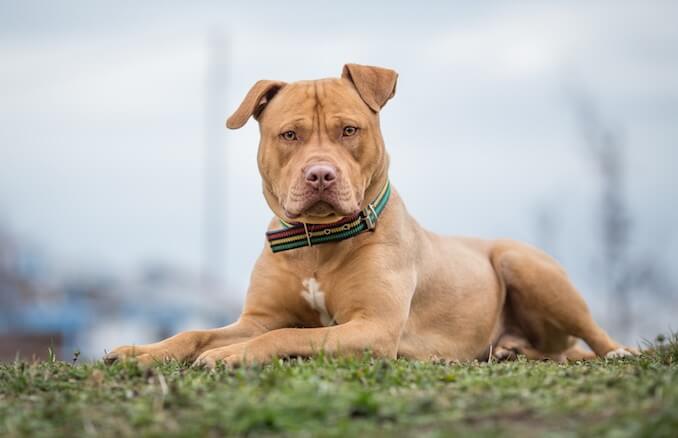
The American Pit Bull Terrier, one of the foundational breeds for the Pocket Pitbull, is renowned for its strength, intelligence, and unwavering loyalty. Originally bred for bull-baiting in England, these dogs were designed to be courageous and tenacious. When brought to America, they transitioned from fierce competitors in blood sports to beloved farm dogs, showcasing their versatility and gentleness with families. This breed’s robustness and spirit make it a prime candidate for those looking to breed a sturdy yet affectionate companion.
The personality of the American Pit Bull Terrier is often misunderstood due to its history in dog fighting. However, those familiar with the breed appreciate its affectionate nature and capability for strong bonds with humans. This breed’s resilience and loyalty are traits that breeders aimed to preserve in the Pocket Pitbull, ensuring that these smaller descendants would maintain the characteristic bravery and affection of their larger ancestors.
Patterdale Terrier
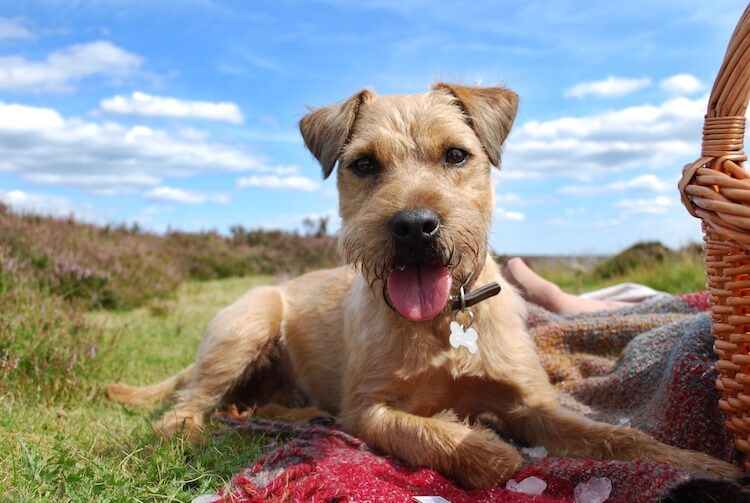
On the smaller side of the Pocket Pitbull’s lineage, we find the Patterdale Terrier, a breed known for its tenacity and energy. Originating from the harsh landscapes of Northern England, specifically the Lake District, the Patterdale Terrier was bred to hunt foxes and other small game, proving that courage often comes in small packages. Their compact size and boundless energy made them excellent hunters in difficult terrains.
Despite their hunting background, Patterdales are incredibly adaptable and affectionate with their owners. They bring to the Pocket Pitbull a fearless spirit and a body size that complements the larger frame of the American Pit Bull Terrier. Their intelligence and determination are key characteristics that have been carried over to the Pocket Pitbull, making it a clever and spirited breed.
History of the Pocket Pitbull
The creation of the Pocket Pitbull was driven by a desire for a dog that embodied the best qualities of the Pit Bull Terrier but in a more compact form suitable for smaller living spaces and easier handling. Breeders carefully selected specimens of the American Pit Bull Terrier and the Patterdale Terrier that exemplified the traits they wanted to emphasize—strength, intelligence, and loyalty.
The breed has not been around for very long compared to its parent breeds, but it has quickly gained popularity, especially among those who admire the Pit Bull’s characteristics but desire a smaller dog. The Pocket Pitbull’s development has been a testament to thoughtful and responsible breeding practices aimed at enhancing the positive attributes of its forebears while minimizing health issues.
Physical Appearance of the Pocket Pitbull
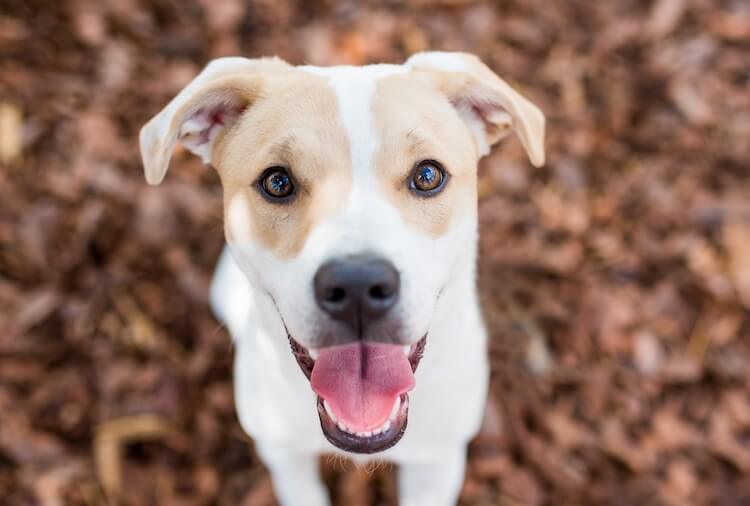
When you first lay eyes on a Pocket Pitbull, you’ll notice a delightful contradiction: a compact frame that houses a remarkably strong and spirited essence. This breed combines the muscular build of the American Pit Bull Terrier with the rugged charm of the Patterdale Terrier, all packaged into a smaller, more manageable size.
Height and Weight
When it comes to the Pocket Pitbull, don’t let the name fool you—while “pocket-sized” in the world of Pit Bulls, they’re certainly not tiny. Typically, these robust dogs stand between 12 to 16 inches at the shoulder, a stature that exudes strength without the bulk of their larger relatives. I’ve often heard potential dog owners express surprise at their solid, muscular build, given their compact size.
In terms of weight, a full-grown Pocket Pitbull usually tips the scales at around 11 to 22 pounds, but some could be as heavy as 50 pounds. Their weight is a testament to their dense, muscular physique—attributes inherited from both parent breeds. This makes them an ideal size for those who admire the heft of a traditional Pit Bull but need a dog that occupies less space.
Coat and Color
One of the most striking features of the Pocket Pitbull is its coat. Short, sleek, and smooth to the touch, their coat is both aesthetically pleasing and practical. This type of coat is incredibly easy to care for, requiring only minimal grooming. I’ve always appreciated this aspect, as it makes them a great choice for busy individuals or those who prefer not to deal with excessive dog hair in their homes.
The color palette of the Pocket Pitbull’s coat can vary widely, reflecting the rich variety found in their American Pit Bull Terrier and Patterdale Terrier heritage. They can sport coats that are black, white, gray, brown, or a mix of these, often marked with unique and charming patterns. These colors can range from solid hues to beautifully mixed patterns that capture the eye and make each Pocket Pitbull distinctively appealing.
Other Physical Features
Beyond their height, weight, and coat, the Pocket Pitbull carries a number of distinctive physical traits that contribute to their unique appearance. Their heads are broad and powerful, often described as block-like, which is a hallmark of the Pit Bull breed. Meanwhile, their ears can be a point of variation. S have ears that stand erect, while others have that characteristic semi-flop. It adds to their expressive faces.
Their eyes are another striking feature, typically round, wide-set, and sparkling with intelligence and eagerness. As someone who’s seen many breeds, I can tell you that their gaze is often one of curiosity and alertness. They reflect their keen senses and bright minds. Coupled with a short, tapered tail that wags vigorously, their overall appearance is one of strength, agility, and friendly confidence.
Temperament of the Pocket Pitbull

These dogs are bursting with personality. They combine the courage and strength of the Pitbull with the tenacity and vigor of the Patterdale Terrier.
Loyalty
If there’s one trait that stands out in the Pocket Pitbull, it’s their unwavering loyalty. It embodies a steadfast commitment to their families. The latter is a hallmark of both their American Pit Bull Terrier and Patterdale Terrier ancestors. In my conversations with owners, they consistently emphasize how these dogs become deeply attached to their human companions. As a result, they often become a shadow to their favorite person.
This loyalty means that Pocket Pitbulls are excellent at forming strong, protective bonds. I’ve witnessed these dogs in action during my visits to friends. They show a remarkable sense of duty to watch over their households. It’s not just about being protective. Their loyalty translates into a profound companionship that supports their owners through daily life’s ups and downs.
Friendliness
Despite their tough exterior, Pocket Pitbulls are friendly. They approach life with a joyful exuberance that’s infectious, often greeting friends and strangers alike with enthusiastic tail wags and eager expressions. This friendliness extends to children as well, which makes them suitable for families looking for a pet that can match the energy levels of active kids.
During one of my visits to a dog park, I observed a Pocket Pitbull interacting with a group of people. The dog was the center of attention, moving from one person to another, offering a sniff here and a nuzzle there, clearly thriving on the social interaction. Their ability to adapt their energy to suit the situation is something that continually impresses me, showcasing their potential as both a family dog and a social butterfly.
Energy and Playfulness
The energy level of a Pocket Pitbull is nothing short of impressive. These dogs possess a zest for life that makes them ideal companions for those who lead an active lifestyle. Whether it’s a long walk in the park or a spirited game of fetch, they are always up for physical activities. Their Patterdale Terrier lineage, in particular, contributes to their high energy and love for play.
I recall a time when I was interviewing a Pocket Pitbull owner for a feature article. He shared videos of his dog effortlessly keeping pace on his morning jogs, highlighting their stamina and eagerness to participate in every family outing. This playfulness is not just about burning off energy; it’s also a key way they bond with their owners and integrate themselves into the fabric of daily family life.
Intelligence and Trainability
Intelligence is a standout feature in the Pocket Pitbull. Their keen minds, inherited from both parent breeds, are quick to pick up new commands and tricks. Such makes training sessions both productive and enjoyable. Many Pocket Pitbull owners have shared with me how these dogs excel in obedience training, showcasing their ability to learn and adapt quickly.
Their trainability extends beyond basic commands. These dogs are capable of participating in more advanced training and activities, such as agility courses or therapy dog training. While I haven’t trained one personally, I’ve been involved in training sessions where Pocket Pitbulls demonstrated remarkable focus and drive. They impress everyone with their quick learning curve and their eagerness to please their handlers. This combination of intelligence and willingness to learn makes them a joy to train. They are a versatile companion capable of excelling in various roles.
Taking Care of a Miniature Pitbull
Caring for a Miniature Pitbull, or Pocket Pitbull, requires a keen understanding of their unique needs. It can be overwhelming for first-time dog owners. But with the right knowledge, you can ensure a happy and healthy life.
Feeding
Proper nutrition is foundational to the health and happiness of a Pocket Pitbull. This energetic breed requires a diet that fuels their active lifestyle while supporting their muscular build.
High-Quality Food
Start by selecting a premium, high-protein dog food. Protein is vital for muscle maintenance and overall growth. Look for foods that list real meat as the first ingredient, and avoid those with excessive fillers like corn or soy, which offer little nutritional value. Brands that cater specifically to active or muscular breeds often formulate their products with the right balance of nutrients, including essential fatty acids, vitamins, and minerals, that are crucial for a Pocket Pitbull’s health.
Measured Meals
Consistency in portion control is essential to prevent overfeeding, which can quickly lead to obesity in smaller breeds. Use a measuring cup to serve the exact amount recommended on the food package based on their weight and age. Adhering to a feeding schedule, with two meals per day for adults and three to four for puppies, helps regulate their metabolism and maintains energy levels throughout the day.
Dietary Adjustments
Tailoring your dog’s diet as they age is crucial. Puppies, with their rapid growth phases, require nutrient-dense foods. They benefit from high calories and rich omega fatty acids to support their development. As they transition to adulthood, the focus should shift to maintaining a balanced diet that sustains their energy while keeping them lean and healthy. For senior dogs, you might consider lower-calorie diets. Include joint-support supplements like glucosamine and chondroitin. They can help mitigate the effects of aging.
Consult with a Veterinarian
It’s always wise to consult with a veterinarian to get personalized advice tailored to your dog’s specific health needs, lifestyle, and any medical conditions. A vet can also recommend adjustments to your Pocket Pitbull’s diet based on their health screenings.
Grooming
By maintaining a consistent grooming routine, you help ensure that your Pocket Pitbull remains clean, attractive, healthy, and comfortable. Each aspect of grooming, from bathing to nail care, plays a vital role in their overall well-being, making it a crucial component of responsible pet ownership.
Bathing
Pocket Pitbulls require regular but not frequent bathing—once every two to three months is typically sufficient unless they get particularly dirty. Use a dog-specific shampoo that is gentle on the skin, as their short coat is easy to clean but can be prone to dryness if bathed too often. Always ensure the water is warm, not hot, and thoroughly rinse any soap out of their coat to prevent irritation.
Dental Care
Maintaining good oral hygiene is crucial for preventing dental diseases, which can affect overall health if left unchecked. Start by brushing your Pocket Pitbull’s teeth regularly, ideally several times a week if not daily. Use a toothbrush designed for dogs and a vet-approved toothpaste; human toothpaste is toxic to dogs due to its fluoride content.
Introduce dental care early in your dog’s life so they get used to the sensation of brushing. Make each session positive and rewarding, using praise and treats to encourage cooperation. In addition to brushing, provide dental chews and toys that help reduce plaque and tartar build-up naturally through the mechanical action of chewing.
Ear Care
Ear care is crucial for preventing infections, especially in breeds like the Pocket Pitbull, who can be prone to ear issues. Check their ears weekly for signs of dirt, redness, or a bad odor. Use a vet-approved ear cleaner and a cotton ball to gently wipe out the ear canal—never insert anything into the ear canal itself. Keeping their ears dry and clean is especially important after bathing or swimming.
Nail Care
Regular nail trims are important to keep your Pocket Pitbull comfortable and prevent issues related to overgrown nails, such as joint pain or walking difficulties. If you can hear their nails clicking on the floor, it’s time for a trim. For those unfamiliar with trimming dog nails, which can be tricky due to the blood vessels in each nail, I recommend seeking a professional groomer or vet to perform or demonstrate the procedure initially.
Shedding and Coat Care
Despite their short coat, Pocket Pitbulls do shed, especially as the seasons change. Regular brushing—about once a week—with a firm bristle brush or a rubber grooming mitt will help manage shedding by removing loose fur and distributing skin oils throughout the coat, which enhances its health and appearance. This regular grooming is also a great opportunity for bonding and can help you spot any skin issues or bumps early.
Skin Care
Pocket Pitbulls can sometimes suffer from skin allergies and sensitivities, which may manifest as irritation or dry patches. Incorporate a skin-conditioning spray or omega-rich supplements as recommended by your vet to support skin health. Always be on the lookout for signs of discomfort, such as excessive scratching or licking, which are indicators that your dog might need a dietary adjustment or special dermatological care.
Exercise
Keeping a Pocket Pitbull active and engaged is crucial for their health and happiness. Their compact size might fool you, but they pack a powerhouse of energy that needs proper outlets.
Daily Routines
Start the day with a brisk walk. Pocket Pitbulls love exploring and sniffing around. Doing so stimulates their mind as well as their body. I always find these morning walks the perfect time for bonding and setting a positive tone for the day.
Incorporate at least one intensive play session daily. Tug-of-war, fetch, or agility exercises work wonders. These activities tap into their natural athleticism and keep them physically fit. Remember, a tired dog is a happy dog.
Training and Socialization
Training should be part of their regular exercise routine. Pocket Pitbulls are intelligent and respond well to positive reinforcement techniques. Short, consistent training sessions help reinforce commands and tricks while providing mental stimulation.
Socialization is also key. Regularly meeting new people and dogs helps them develop confidence and good manners. Take your dog to local parks where it can interact with other dogs. This can keep your pooch well-adjusted and socially engaged.
Adventure and Exploration
Change up the scenery often. Hiking, swimming, and exploring new parks can prevent boredom and stimulate their senses in new ways. Every weekend, try to find a new trail or beach to explore, which keeps every outing exciting and new.
Regular exercise is not just about keeping your Pocket Pitbull physically fit. It’s also about nurturing their mental health and strengthening the bond. By keeping their exercise routine varied and engaging, you ensure they remain energetic and happy.
How to Train a Pitterdale
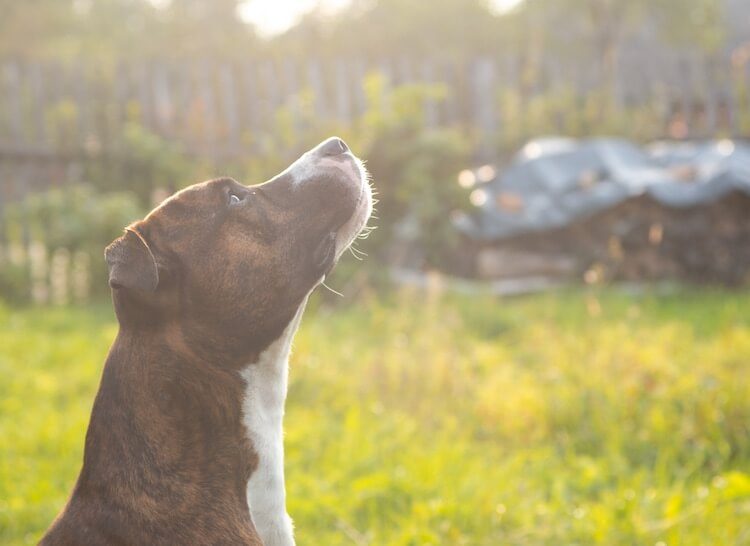
Personally, my interactions with Pocket Bullies are short but sweet. I have not had the chance to train one. However, drawing from my expert knowledge, I have some recommendations.
Mastering the Basics
Kick off your training journey with basic commands such as ‘sit,’ ‘stay,’ and ‘come.’ These are more than just tricks. They are essential communications that will strengthen your bond. Short, engaging sessions keep their attention best. Use treats and praises generously. Pocket Bullies respond well to positive reinforcement, making training a fun game rather than a chore.
The Power of Socialization
Socialization is key to shaping a well-rounded dog. Expose your Pocket Bully to different settings, people, and other animals early on. This variety teaches them to adapt and react calmly in new situations. A well-socialized Miniature Bully is confident and outgoing, ready to accompany you anywhere—from crowded parks to cozy cafes.
Benefits of Crate Training
Crate training is more than just housebreaking your pup; it gives them a personal space where they feel secure. Start by making the crate inviting with their favorite toys and soft bedding. Remember, the crate should always represent a safe haven, never a punishment. This approach helps manage anxiety and ensures your Pocket Bully views their crate as a retreat.
Engaging in Advanced Training
Once your Pitterdale has the basics down, it’s time to raise the bar. Agility training, obedience competitions, and even therapy dog certifications are fantastic ways to challenge their intellect and physical prowess. Activities like these not only keep them physically fit but also mentally sharp. Plus, they deepen the connection between you and your dog, fostering mutual respect and understanding.
Common Health Problems in Pocket Pitbulls
Owning a Pocket Pitbull brings joy and companionship, but it’s important to be aware of certain health issues that can affect this breed. Being proactive about their health can prevent complications and ensure a longer, happier life.
Hip Dysplasia
A prevalent genetic issue in Pocket Pitbulls, hip dysplasia is characterized by a malformation of the hip joint that can lead to painful arthritis or lameness as the dog ages. This condition can significantly impact a dog’s quality of life, but with early detection and careful management, many dogs continue to live full, active lives.
- Encourage Low-Impact Exercise: Activities like swimming are excellent for Pocket Pitbulls with hip dysplasia. Water buoyancy reduces strain on the hips while allowing the dog to stay active and maintain muscle tone, which is crucial for joint support.
- Maintain a Healthy Weight: Excess weight puts unnecessary stress on a dog’s joints, exacerbating the symptoms of hip dysplasia. Keeping your Pocket Bully at an ideal weight through a balanced diet and regular exercise can help manage this condition.
- Supplements for Joint Health: Supplements containing glucosamine and chondroitin can promote joint health and potentially reduce discomfort. These compounds help rebuild cartilage and retain joint fluid, offering some relief from the joint stiffness associated with hip dysplasia.
- Regular Veterinary Check-ups: It’s important to work closely with your vet to monitor your dog’s hip condition, especially as they grow and age. Regular X-rays can assess the severity of the dysplasia and help tailor a specific care plan.
- Orthopedic Beds: Invest in a high-quality orthopedic dog bed to support proper joint alignment and enhance comfort. These beds are designed to distribute a dog’s weight evenly, reducing pressure on the hips and providing a soft resting spot that can ease joint pain.
Allergies
Pocket Pitbull allergies can present a variety of symptoms, ranging from skin irritations and itching to gastrointestinal issues. These allergies are often triggered by environmental allergens, food ingredients, or even fleas. Identifying and managing these allergens is crucial for alleviating discomfort and preventing chronic conditions.
- Hypoallergenic Grooming Products: Utilize hypoallergenic shampoos and grooming products specifically designed for sensitive skin. These products are free from harsh chemicals and fragrances that can exacerbate allergic reactions, helping to keep your dog’s coat and skin clean without causing irritation.
- Regular Bedding Maintenance: Allergens can accumulate in your dog’s bedding and living spaces, contributing to allergic reactions. Washing bedding and cleaning these areas regularly helps remove dust, pollen, and other potential irritants, reducing the likelihood of allergic flare-ups.
- Allergy Testing: Consulting with a veterinarian about allergy testing can be a significant step in managing allergies. These tests can help identify specific environmental or dietary triggers that may be causing your dog’s symptoms. Knowing exactly what to avoid can make a substantial difference in your pet’s comfort and health.
- Elimination Diet: Vets may recommend an elimination diet if they suspect food allergies. This involves feeding your dog a simplified diet of foods they have never eaten before (usually a protein and carbohydrate that are new to the dog) and gradually reintroducing usual foods to pinpoint the allergen.
- Antihistamines for Immediate Relief: For acute allergy symptoms, antihistamines can provide quick relief from itching and discomfort. Always use these medications under the guidance of your veterinarian, as dosages and suitability can vary based on your dog’s specific health needs.
Heart Disease
As Pocket Bullies get older, they become more prone to heart diseases. The condition can vary in severity, often affecting a dog’s lifespan and quality of life. Proactive monitoring and early intervention are crucial for managing heart disease effectively.
- Regular Cardiovascular Check-ups: Regular check-ups with your veterinarian are essential for early detection of heart disease. These exams often include listening to the heart for murmurs or irregular rhythms and may involve diagnostic tests like X-rays or echocardiograms to assess heart health more comprehensively.
- Monitoring Symptoms: Be vigilant for signs of heart disease, which can include coughing, especially at night or after exercise, fatigue during activities that were previously easy, or difficulty breathing. These symptoms can indicate that the heart isn’t pumping efficiently and that a veterinary assessment is necessary.
- Low-Sodium Diet: If heart disease is diagnosed, your vet may recommend a low-sodium diet. Reducing sodium intake helps manage fluid retention and blood pressure, both of which are crucial for dogs with heart conditions. Always choose dog foods specifically formulated for heart health and avoid giving table scraps that may be high in salt.
- Consistent, Moderate Exercise: While vigorous exercise may be too taxing for dogs with heart disease, moderate and consistent exercise helps maintain cardiovascular health and manage weight. Gentle walks tailored to your dog’s current fitness level can be beneficial, but always monitor their response and consult with your vet for personalized advice.
- Heart Health Supplements: Certain supplements, such as omega-3 fatty acids, coenzyme Q10, or taurine, might be recommended by your veterinarian to support heart function. These supplements can help improve heart muscle function and overall cardiovascular health.
Hypothyroidism
A relatively common condition in Pocket Pitbulls, hypothyroidism happens when the thyroid gland doesn’t produce enough thyroid hormone. This hormone is crucial for regulating metabolism, and its deficiency can lead to a variety of symptoms. Early diagnosis and treatment are essential to manage this condition effectively.
- Symptoms to Watch For: Look out for signs of hypothyroidism which include lethargy, unexplained weight gain, hair loss, dry skin, and intolerance to cold. Behavioral changes such as increased aggression or depression can also occur. These symptoms often develop slowly, making them easy to miss in the early stages.
- Veterinary Diagnosis: If you suspect hypothyroidism, a visit to the vet is necessary. Diagnosis typically involves a thorough physical examination and blood tests to measure levels of thyroid hormone. These tests help confirm the diagnosis and rule out other conditions with similar symptoms.
- Thyroid Hormone Replacement Therapy: The primary treatment for hypothyroidism is hormone replacement therapy, which involves daily medication to supplement the missing thyroid hormone. It’s crucial to follow the dosage recommended by your vet and to continue the treatment for your dog’s lifetime.
- Regular Monitoring: Once treatment begins, regular monitoring is crucial to ensure the hormone levels are within a healthy range. Follow-up visits may involve blood tests and adjustments to the medication dosage based on your dog’s response.
- Diet and Exercise: Supporting your Pocket Pitbull’s overall health with a balanced diet and regular exercise can help manage hypothyroidism effectively. Ensure that their diet supports their energy needs and weight management, which can be more challenging with a slowed metabolism.
Costs of Owning a Pocket Pitbull
Bringing a Pocket Pitbull puppy into your home is an exciting decision, but it’s important to understand the financial commitment involved. Here’s a detailed breakdown of the costs you can expect when owning one of these energetic companions.
Initial Costs
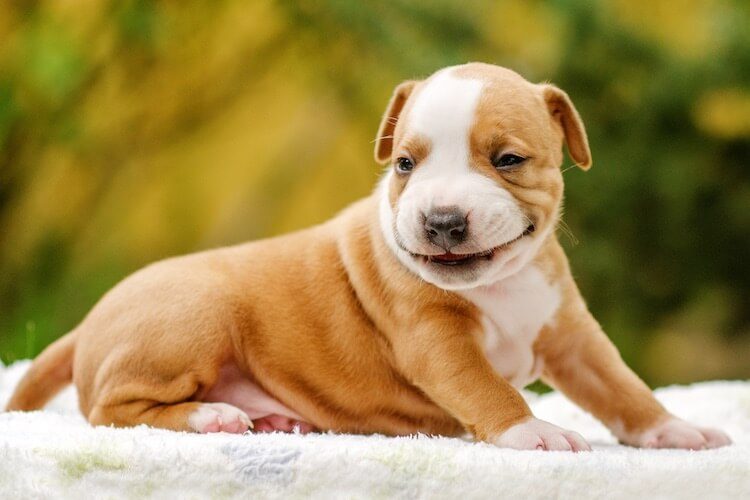
The initial cost of a Pocket Pitbull puppy can vary widely depending on the breeder’s reputation, the puppy’s lineage, and geographic location. Typically, you might expect to pay anywhere from $1,500 to $3,000 for a well-bred pup. This price often reflects the breeder’s commitment to health testing and early socialization efforts.
In addition to the purchase price, initial veterinary visits for vaccinations, microchipping, and spaying or neutering need to be considered. These can add up to several hundred dollars. Also, investing in quality supplies such as a crate, bedding, toys, and a collar and leash is essential from day one.
Ongoing Costs
Feeding a Pocket Pitbull isn’t overly expensive, but opting for high-quality dog food can increase monthly costs. Plan to spend around $40 to $60 per month on food, depending on the brand and your dog’s size and activity level.
Regular vet check-ups are necessary to keep your Pocket Pitbull healthy. Annual veterinary expenses, including vaccines and routine check-ups, can range from $200 to $500. Remember, unexpected health issues can arise, so setting aside an emergency fund or considering pet insurance might be wise.
Training and Grooming
Professional training sessions can help address behavioral issues and reinforce obedience, which is particularly valuable in the energetic and sometimes stubborn Pocket Pitbull. Group training classes might cost around $50 to $150 for a series, while private sessions can be significantly more.
Grooming costs are relatively low due to their short coat, but regular nail trims, ear cleaning, and the occasional bath are still necessary. If you choose to use professional grooming services, expect to pay around $30 to $50 per visit.
Additional Expenses
Don’t forget about costs for boarding or pet-sitting services when you travel, which can add up quickly. Also, replacing toys and bedding, buying treats, and occasional health supplements or medications should be budgeted for.
FAQs: More About Pocket Bullies
What is the lifespan of a pocket bully?
Pocket Bullies typically enjoy a lifespan of 11 to 14 years. With proper care, including regular veterinary check-ups and a healthy lifestyle, these dogs often live full and happy lives. It’s important to manage their health issues proactively to maximize their lifespan.
How much do pocket bullies bark?
Pocket Bullies are not known for excessive barking. They tend to bark to alert their owners or when they feel it’s necessary, which makes them decent watchdogs. Proper training and socialization can help manage their barking behavior effectively.
Do pocket bullies shed a lot?
Pocket Bullies have a short coat that sheds moderately. Regular grooming, including weekly brushing, helps keep shedding under control and their coat healthy. During shedding seasons, more frequent brushing might be necessary.
Are pocket bullies good with children?
Pocket Bullies are generally good with children, especially when raised with them from a young age. They are known for their loyalty and protective nature, making them excellent family pets. However, as with all breeds, supervision and proper socialization are crucial.
How well do pocket bullies get along with other pets?
When properly socialized, Pocket Bullies can get along well with other pets. They may have a strong prey drive, so early and consistent training is essential for harmony in multi-pet households. Introductions should be done carefully and gradually.
Can pocket bullies adapt to apartment living?
Pocket Bullies can adapt well to apartment living if their exercise and mental stimulation needs are met. They require regular physical activity to stay healthy and content. Daily walks and playtime are essential, even in a smaller living space.
So, Is the Pocket Pitbull Right for You?
Choosing to bring a Pocket Pitbull into your life means committing to an active, engaging companionship. They offer immense loyalty and affection, but they also demand attention, exercise, and firm handling. Assessing whether their characteristics align with your lifestyle and pet ownership expectations is crucial for a harmonious relationship.
Pocket Pitbulls Are For
- Active Individuals or Families: If you enjoy regular physical activities and can provide daily exercise, a Pocket Pitbull could be a great match.
- Those Seeking a Loyal Companion: Pocket Pitbulls are known for their loyalty and affection towards their owners.
- Experienced Dog Owners: Ideal for those who have experience in dog training and handling, as this breed can be strong-willed.
- Homes with Space: While they can adapt to apartments, they thrive in homes where they have more space to move around.
Pocket Pitbulls Are NOT For
- First-Time Dog Owners: Due to their strong personality and specific needs, Pocket Pitbulls may not be the best choice for first-time dog owners.
- Busy Individuals: If you cannot commit to the high energy and time demands for training and exercise, this breed might not be for you.
- Families with Very Small Pets: Their strong prey drive can make cohabitation with small pets challenging unless carefully managed from an early age.
- Those Seeking a Low-Maintenance Pet: Pocket Pitbulls require consistent training, socialization, and physical care to stay healthy and happy.

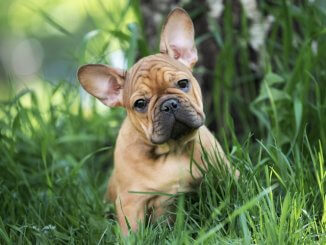
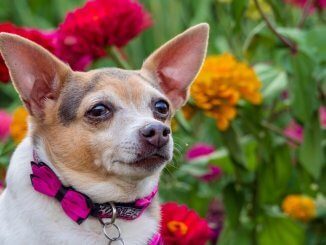
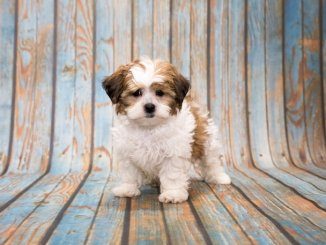
I have a 6 month old pocket pit bull. Love me this pup we call Sadie. She is about the funniest pup I’ve had in a long time. Before her some 15 years ago I shared my life with an American bulldog the most intelligent dog. We hope that she and our family have the experience of a life time with Miss Sadie
How has the shedding with this breed been for you?
We have had our pocket bully ruger since he was 5 months old. He is so smart and loveable. He is my emotional support animal. And ruger is great at his job. He knows us so well he sleeps with me in my bed and cuddles all night..i was reading in the article about the weight. It sounds like ruger might be over weight.